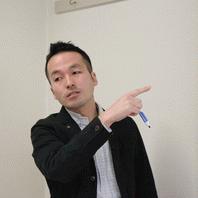![]()
![]()
Research Support Office Research Advancement Division. Tokyo University of Agriculture and Technology
| TEL | +81-42-367-5944 |
|---|---|
| FAX | +81-42-367-5946 |
This program is supported by MEXT’s scientific technology human resource development fee grant, "Program to Disseminate Tenure Tracking System".
Home > Tenured Faculties > Inasawa Susumu

Inasawa Susumu

| Affiliation | Institute of Engineering |
|---|---|
| Division | Division of Applied Chemistry |
| Research field | Research field Reaction engineering, Kinetic of drying |
| Keyword(S) | Silicon materials, nano-materials, kinetics of film formation via coating and drying |
| Url | http://web.tuat.ac.jp/~inasawa/ |
| Research experience | ・Apr. 2005-Mar. 2006: JSPS research fellow (DC2) |
|---|---|
| Educational background | ・Mar. 2001 Department of Chemical System Engineering, School of Engineering, the University of Tokyo (B. Eng.) |
| Awards | * The latest information is shown at the member's website. |
| Selected papers and publications | * The latest information is shown at the member's website. |
My main concern is formation kinetics of "solids", especially in chemical reactions and/or drying of a suspension.
1. Formation kinetics of silicon solids with various morphologies in the zinc reduction of SiCl4.
Reduction of SiCl4 with zinc vapor is known as “the zinc reduction reaction” and has been expected as a new possible low cost production route for silicon materials. I have been studying fundamental reaction kinetics of the reaction. I found that various silicon materials, such as needle-like silicon with high purity, microparticles and silicon nanowires, were formed in the same reaction, depending on reaction conditions and reaction rates. Formation mechanisms, such as, how do these silicon solids form? or what is the crucial factor which determines morphology and/or size?, are our main concerns in this topic.
2. Formation of solid films via coating and drying
Coating and drying are practically used processes in industry. However, fundamental understanding of these processes is still insufficient. Thereby we have to conduct trial-and-error approaches to deal with some common problems, such as how to coat a dense paste, or how to increase drying rate without losing properties of films. In this topic, understanding of fundamental aspects of complicated phenomena, for instance, shear-thinning/shear-thickening, condensation and consolidation kinetics of drying suspension (ink), is a key issue.
I appreciate two key supports. One is from my mentor for his useful advises and the other is financial support from TUAT for the start-up of my laboratory. Young researchers are supposed to manage individual laboratories under their own responsibilities in this tenure-track program, which is a good system for training of young researchers like me. TUAT has been highly-evaluated for the tenure track program and many tenure-tracking professors are working here, which encourages me. This is one of the advantages in TUAT compared to other universities.
Collaboration with companies is a key issue for the future of universities. I have decided to study practical topics in industry, especially, some common problems in reactions and coating/drying. Efficient manipulation of these processes on the basis of fundamental understanding of phenomena is our goal. My laboratory will be a place to solve and discuss fundamental problems that companies want to understand. Of course students are involved in these topics. I believe dealing with these practical problems in laboratory would help students to be more independent and more capable.